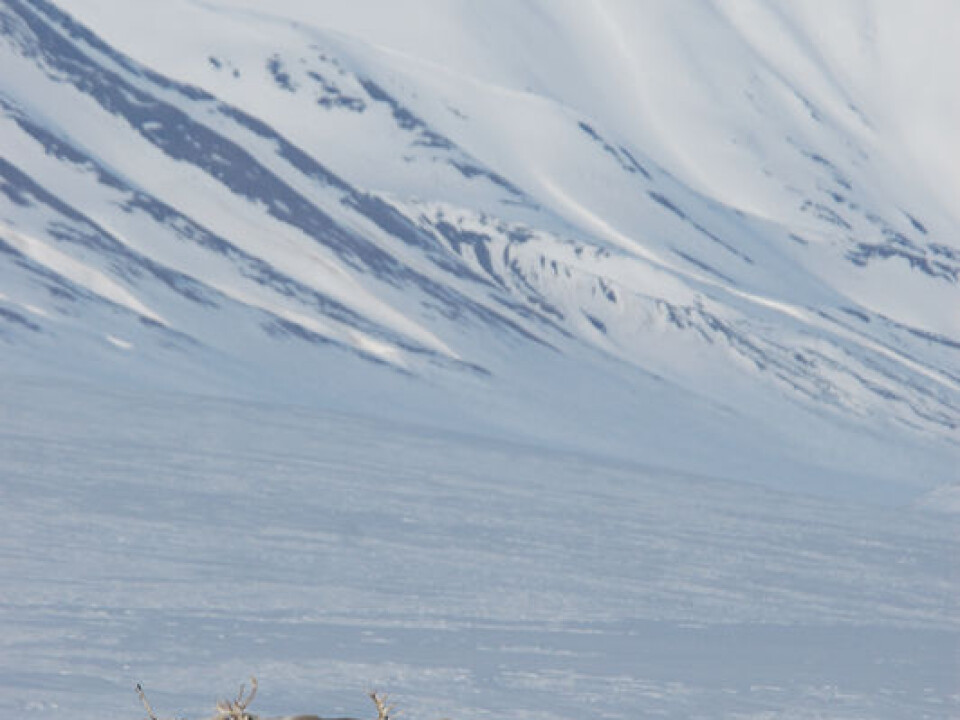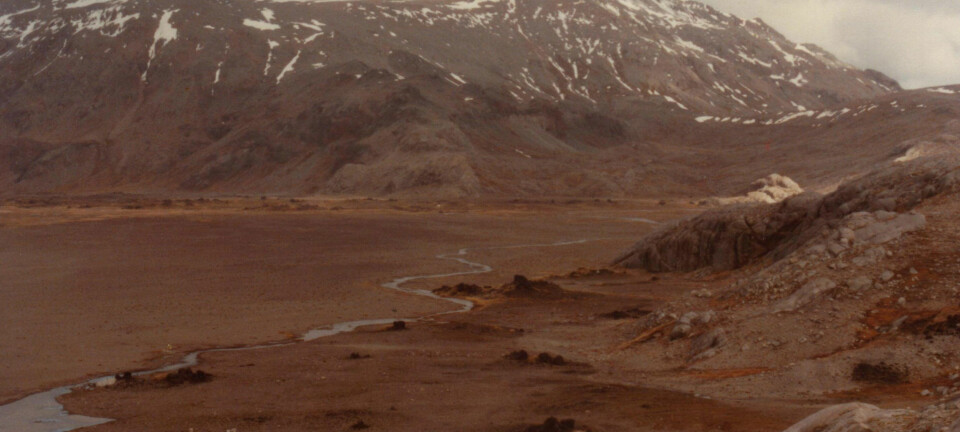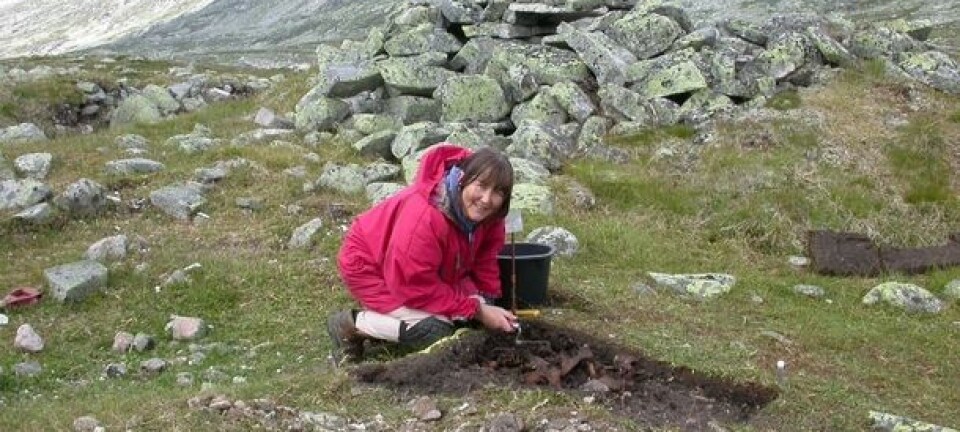
Winter rains threaten reindeer and voles
A small rodent, the vole, shares an icy issue with reindeer in Svalbard. A warmer Arctic climate could bring more winter rains and tougher conditions for the two species.
Denne artikkelen er over ti år gammel og kan inneholde utdatert informasjon.
Norway’s Arctic Archipelago Svalbard gets some unseasonal rains now and then in winter. When it rains enough to soak through the snow and freeze against the topsoil, grass and other vegetation becomes hard for herbivores to reach.
Two very different species are significantly affected by these rainfalls in the winter: the Svalbard reindeer and the sibling vole, which is Svalbard’s only rodent and only other mammalian land herbivore.
The common factor impacting both stocks is winter rain, or the lack of it, according to a new study published in Biology Letters by scientists in Norway and Scotland.
More rain
As the planet heats up, so far most in the polar regions, the Arctic is expected to get more rain in the season when powder snow would be expected.

The study indicates that climate changes can have massive consequences on the entire Arctic ecosystem.
This year with much more rain than average, calves of the Svalbard reindeer have a significantly smaller chance of survival and stocks of the sibling vole (Microtus kuis) are expected to plunge.
On the Norwegian mainland in Finnmark County, well north of the Polar Circle, wet winter precipitation that freezes and locks vegetation under a sheet of ice is also known to aggravate reindeer browsing.
Large and small alike
“The Sami who maintain reindeer herds are familiar with this problem. What’s special about Svalbard is that this greatly impacts the voles. So it’s affecting large and small alike,” says one of the researchers behind the study, Audun Stien at the Norwegian Institute for Nature Research (NINA).

Stien says that last winter, which wasn’t included in the study, was yet another with lots of winter rain.
“Permafrost is what’s special about Svalbard. When the rain soaks down through the snow it freezes against frozen soil,” he says.
Svalbard reindeer (Rangifer tarandus platyrhynchus) is a subspecies of reindeer found only on Svalbard. The other herbivore in the study, the sibling vole, was introduced to the island group inadvertently.
Leningrad stowaway
It’s believed to have arrived as a stowaway on a Soviet ship supplying a mining settlement southwest of Longyearbyen. The mines were shut down in the 1960s.
“The cargo included both cows and horses and the sibling mole probably came with some hay that was sent as fodder for the livestock,” says Stien.
The little rodent may have arrived on a vessel that had loaded cargo in Leningrad, now St. Petersburg.
Although its natural habitat is warmer – the sibling vole thrives as far south as the Ukraine and Southern Europe – it has managed to adapt to the Arctic conditions of Svalbard. It prefers the area beneath nesting cliffs of birds, near the abandoned settlement.
Better browsing
The Svalbard reindeer and the sibling vole are now the only two herbivore land mammals on Svalbard.
More winter rains in a warmer Arctic climate can give them tougher conditions. On the other hand, warmer summers and longer growing seasons can provide more vegetation and have a positive effect.
Stien says the jury is still out as to whether the two factors will counteract one another or whether one of them will take precedence.
-------------------------------
Read the Norwegian version of this article at forskning.no
Translated by: Glenn Ostling
































